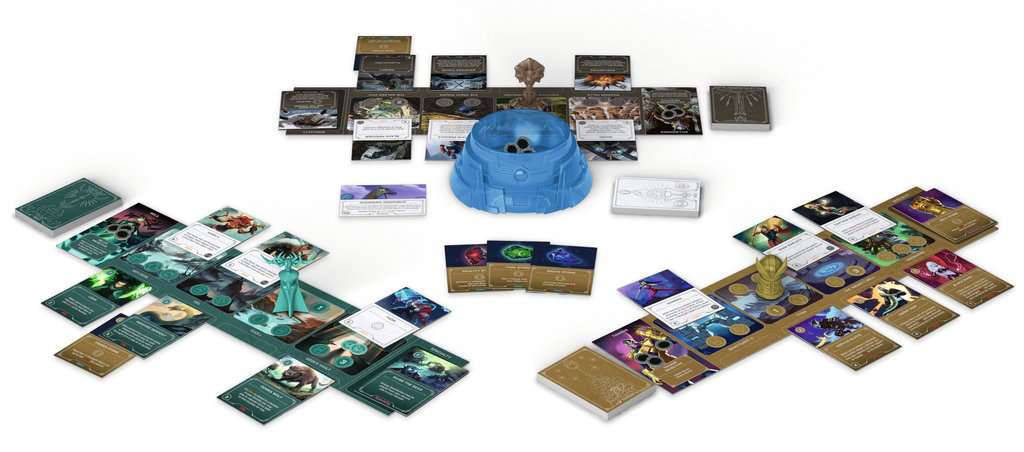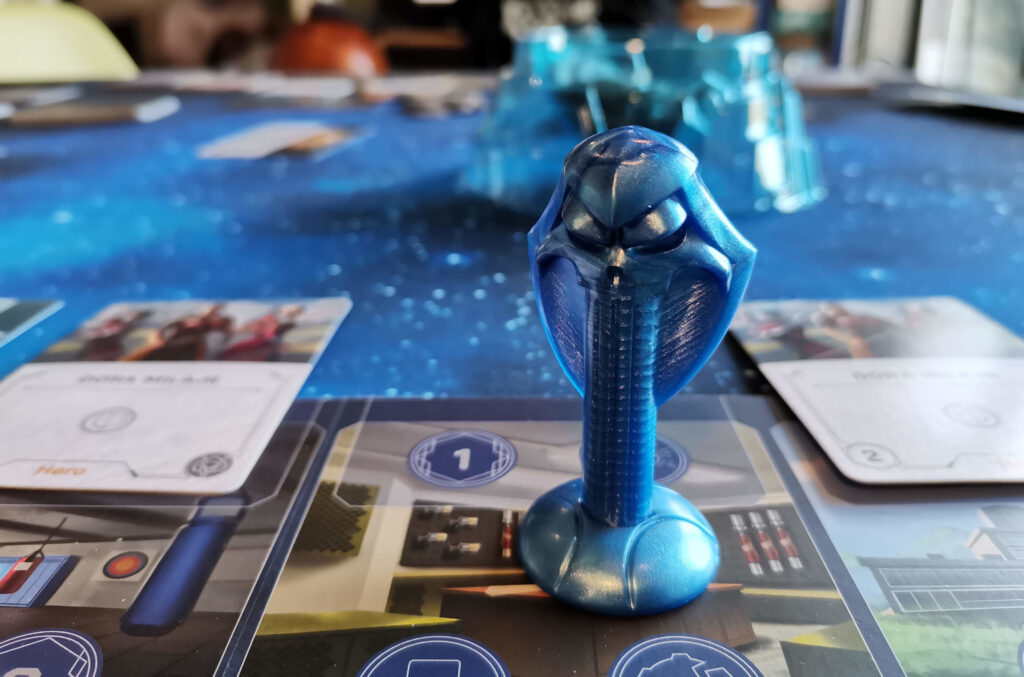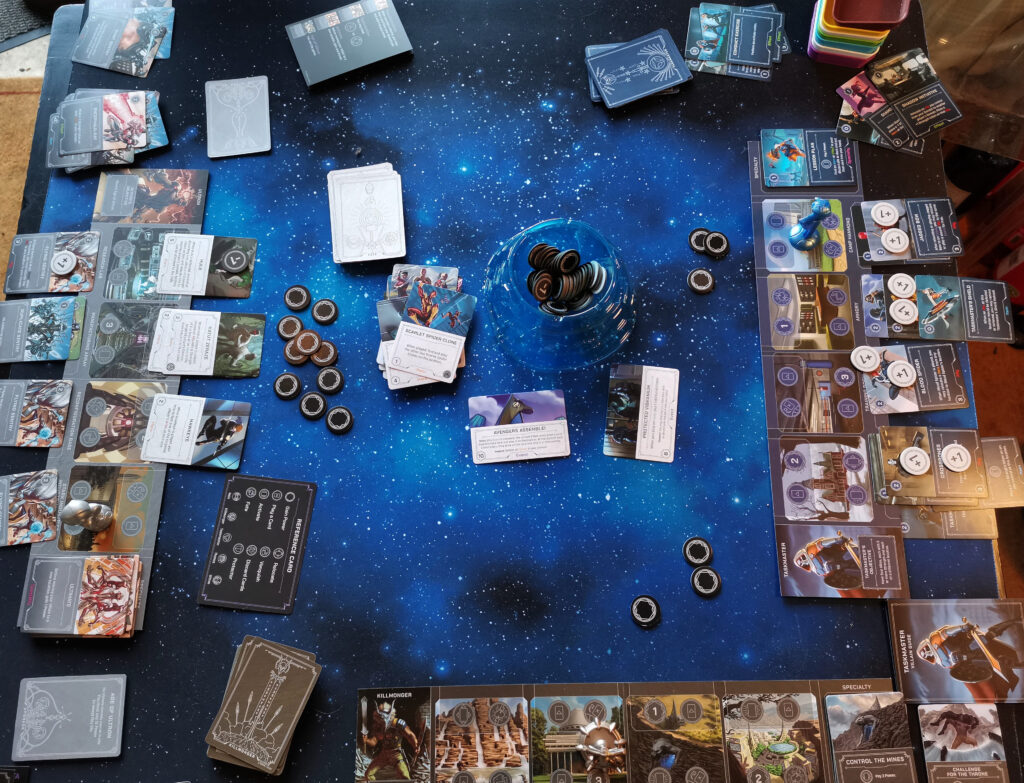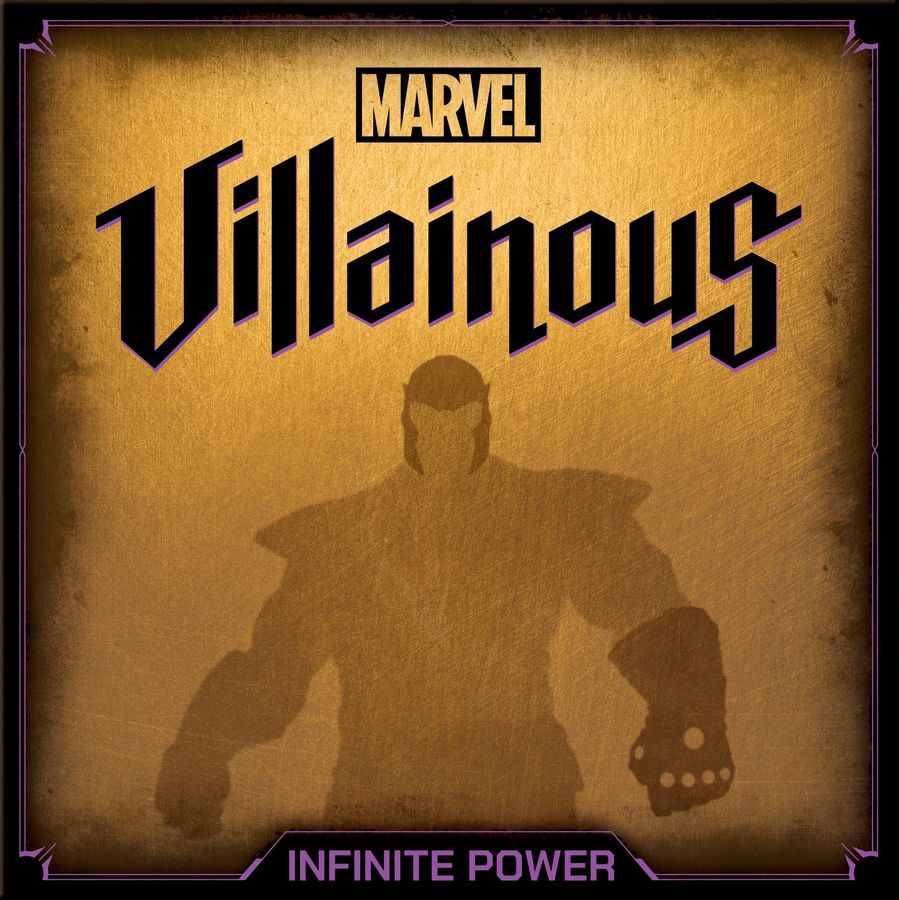Disney Villainous came out of nowhere in 2018 and captured the imagination of the board-game-curious everywhere. Marvel Villainous picks up the baton and runs with the format, aiming to grab the attention of Marvel’s enormous fanbase. Let’s get under the bonnet (hood, for my American friends) and see what makes the game tick.

Marvel Villainous is an asymmetric strategy game, where players assume the roles of one of five big bad guys from the Marvel universe – Ultron, Hela, Taskmaster, Killmonger, and the one even your dad has heard of, Thanos. Through card management and action selection, they’ll be trying to achieve very different win conditions, and declare themselves the biggest, and baddest of the lot.
Snobbery? Me?
Okay, I’ll admit it. When I first saw the buzz around the original Villainous game, I felt my inner snob talking to me. “A mass-market Disney game? Don’t even think about it, we like beige, complicated games with questionable box art“. I was curious because a lot of people were playing it, and the minis and artwork looked great, I just wasn’t sure there’d be enough game there to keep me interested.
Time passed though, I did some reading, and when the chance came to get Marvel Villainous: Infinite Power (to give it its full name, which nobody uses), I decided to come at it with an open mind. The theme is great, and fans of the comics and films will really appreciate the actions of each and every one of the hero and ally cards. When you’ve got a franchise as big an powerful as Marvel in your hands, you want to make the most of the lore and characters given to you, and Ravensburger really have.
Master of your domain
Each player has their own board, which represents their villain’s domain, and a deck of cards which is unique to them. On your turn you move your (gorgeous) villain pawn to a different space on the domain, and then carry out as many of the available actions on that space as you want. Those actions are usually choices such as take some power tokens (the game’s currency), play a card, or vanquish one of the heroes that one of the other players has put on your board. You draw back up to the hand size limit, and it’s the next player’s turn. The action selection is actually a sneaky way to introduce rondels to your group. It might not look like one, but it’s a four-space rondel with a three-space movement range. Board game smarts, right there.

The game is a balancing act in a couple of different ways. Your focus is always going to center around your domain, as that’s where you play your cards to build towards your win condition. Allies, items and effects all get played from your hand, usually at the cost of some of your power tokens. At the same time though, you need to keep an eye on what your nefarious neighbours are up to. Everyone knows everyone else’s win condition, because they each have a reference card. So when you’re dishing out heroes from the fate deck – which then sit in other players’ domains, blocking actions and adding negative effects – make sure you’re hindering the person you think is doing the best. That’s not as easy as it sounds though, because if you’re playing cards to scupper someone else, you’re not working towards winning.
Variety is the spice of life
I really like how different each villain is. One game you’re playing as Taskmaster, who needs to use his items to power-up four of his allies to a strength of five. Then the next game you’re Ultron, and he’s got his own set of special tiles which go on his play area. As you advance through the game, these tiles get flipped, give you a new perk, and show the next challenge on the road to victory. It’s variety like this which stops the game getting stale. If you’re bored of chasing the infinity stones as Thanos, go take on Black Panther as Killmonger instead.
The way the fate deck works is really clever too. Firstly, it changes every game. The standard deck of fate cards gets shuffled with the specific fate cards of the villains in the current game, and it means you’re going to see very different cards and heroes rearing their do-gooding heads each time you play. There’s also the option of removing the Event cards from the fate deck, which makes for an easier, faster game. That kind of flexibility in difficulty is a great touch, because this game is probably going to be out of some people’s comfort zone. If you want your friends to come back for a second game, lowering the difficulty is a great way to make the game more approachable, and ultimately more fun.

There are so many ways the five villains can be combined with four players, you’re never going to play the same game twice. That’s a lot of replay value for a game that you can pick up for around £30. It’s a game that’s begging for an expansion, so here’s hoping Ravensburger give it the same treatment they did with the Disney version.
Final Thoughts
I’m pleasantly surprised by Marvel Villainous. More than surprised, I’m actually really impressed. I was worried it would be very light in terms of strategy and choice, but it really isn’t. There’s plenty of scope to play with a strategy from the start of the game once you know the characters, but it really needs a first play before everyone gets what’s going on. I really like the asymmetry, and although I’ve not played with every combination at lots of different player counts, the balance seems to be very good.
As a big Euro game fan, player interaction isn’t something I deal with often. 99% of the time in a Euro, interaction is indirect, but In Marvel Villainous you’re actively targeting the other players, sometimes even coming up with agreements to join up and take on someone close to winning. Just don’t expect those alliances to last very long! I really enjoy the interaction, it makes a real change for me, just remember the golden rule that everyone is friends again after the game.

I want to give the rule book a mention too. This game could have been pretty tricky to explain, and very easy to explain badly, but the rule book is excellent. The terminology is consistent, the examples are great, and the important card types are colour-coded throughout, so you can easily learn the game without a video.
Who is Marvel Villainous for?
If you are either new to the hobby board game scene, or hoping to use this as a gateway game to bring in some family or friends, I recommend using the Omnipotent game mode, so that all of the Event cards are removed. They’re great once you know the game, and add in some conditions that affect one or all of the players and give you another thing to work towards, sometimes forcing you to work together.
I think this is a great game for families with children at least ten-years-old. My eight-year-old son gets the idea, but finds the strategic planning tricky. Games can last for quite a while too, so it’s not great for people with short attention spans. I also think it’s at its best with more than two players. A lot of the enjoyment comes from the back and forth and ‘how could you?!‘s, so the more of you sharing banter, the better. There isn’t a set number of rounds, it’s just a race to meet your victory condition first. One player wins, the others don’t, and that’s an ending befitting a game where the goal is to become the ultimate villain in the universe.
If you’re a fan of all things Marvel, it’s a fantastic game which really captures the feel and aesthetic. With two, it’s pretty good, with three or four players though, Marvel Villainous shines like an infinity gauntlet loaded with stones.

Designer: Prospero Hall
Publisher: Ravensburger
Art: n/a
Players: 2-4
Playing time: 60-90 minutes
Review copy kindly provided by Ravensburger UK. Thoughts and opinions are my own.
